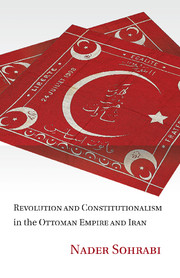Concluding Remarks
Published online by Cambridge University Press: 05 November 2011
Summary
As different as the Ottoman Empire and Iran were in social structure, population makeup, social classes, and problems, their revolutions had unmistakable affinities. Their timing was the principal reason for these affinities; at the beginning of the twentieth century, constitutionalism was the dominant revolutionary paradigm, as it had been since the French Revolution. The choice was consequential for the conduct of the Ottoman and Iranian revolutions, the institutions created, the nature of political transformations, and the redefinitions of sovereignty. Capturing the executive was not part of this message; instead, energies were directed toward creating a strong legislature to check the executive. The idea of fusing the two as the revolution’s defining political moment was a Bolshevik legacy that had not yet become part of the historical agenda of revolutions.
The shared global master-frame endowed the Ottoman and Iranian revolutions with similar dynamics. These included their rather bloodless initial transition to a new democratic system, the sudden emergence of public spheres, the outbreak of classic struggles between the legislature and the executive, fights over writing, modifying, and interpreting the constitution, redefinitions of sovereignty, and the push for radical social and political transformations that was spearheaded from within the legislature. A peculiarly unstable context that was inherent to newly established constitutional systems was also shared; the new arrangements heightened rather than lessened tensions, thanks to the legalized platform that was now at the service of the opposition. Nonetheless, to materialize change, the opposition had to rely on the old-regime executive structure. This made the task difficult in the Ottoman Empire and nearly impossible in Iran. The situation underscored a major contradiction. On the one hand, revolution called for radical change, which required means that were either entirely unavailable or not adequately so. The constitutionalists thus mobilized organizations that resorted to extra-legal or illegal methods and means, when constitutionalism derived its legitimacy from, and called for, strict adherence to the law. The two were incompatible and constitutionalists remained guilty of many illegal infractions. The instabilities created by actual change, or the threat of radical change, combined with the inbuilt contradictions of the constitutional revolution, culminated in backlash. The Ottoman Empire and Iran both experienced counterrevolutions, and similar dynamics applied more or less to 1905 Russia. But beyond those globally shared characteristics, the Ottomans and Iranians were tied together in more intimate ways.
- Type
- Chapter
- Information
- Revolution and Constitutionalism in the Ottoman Empire and Iran , pp. 427 - 436Publisher: Cambridge University PressPrint publication year: 2011



